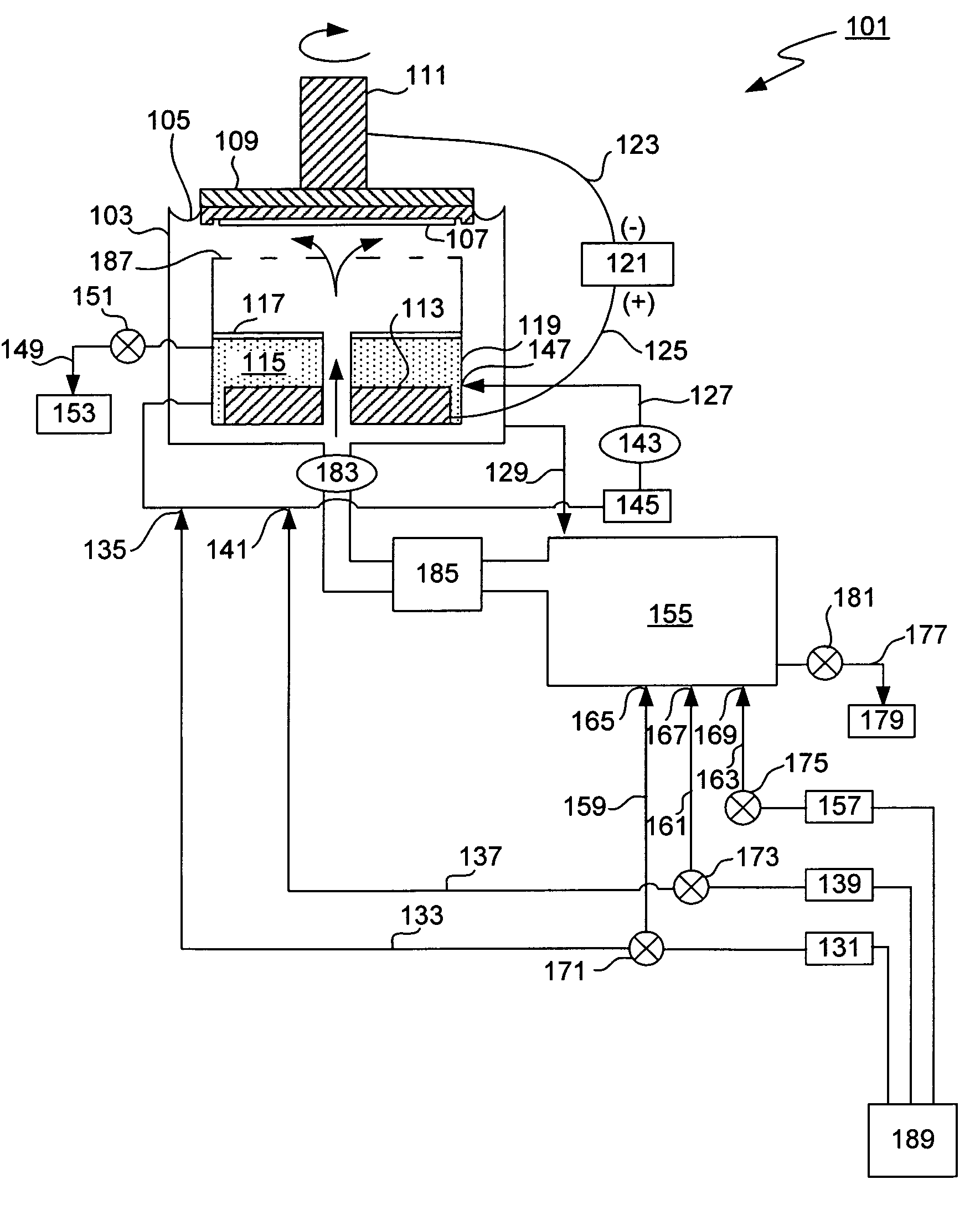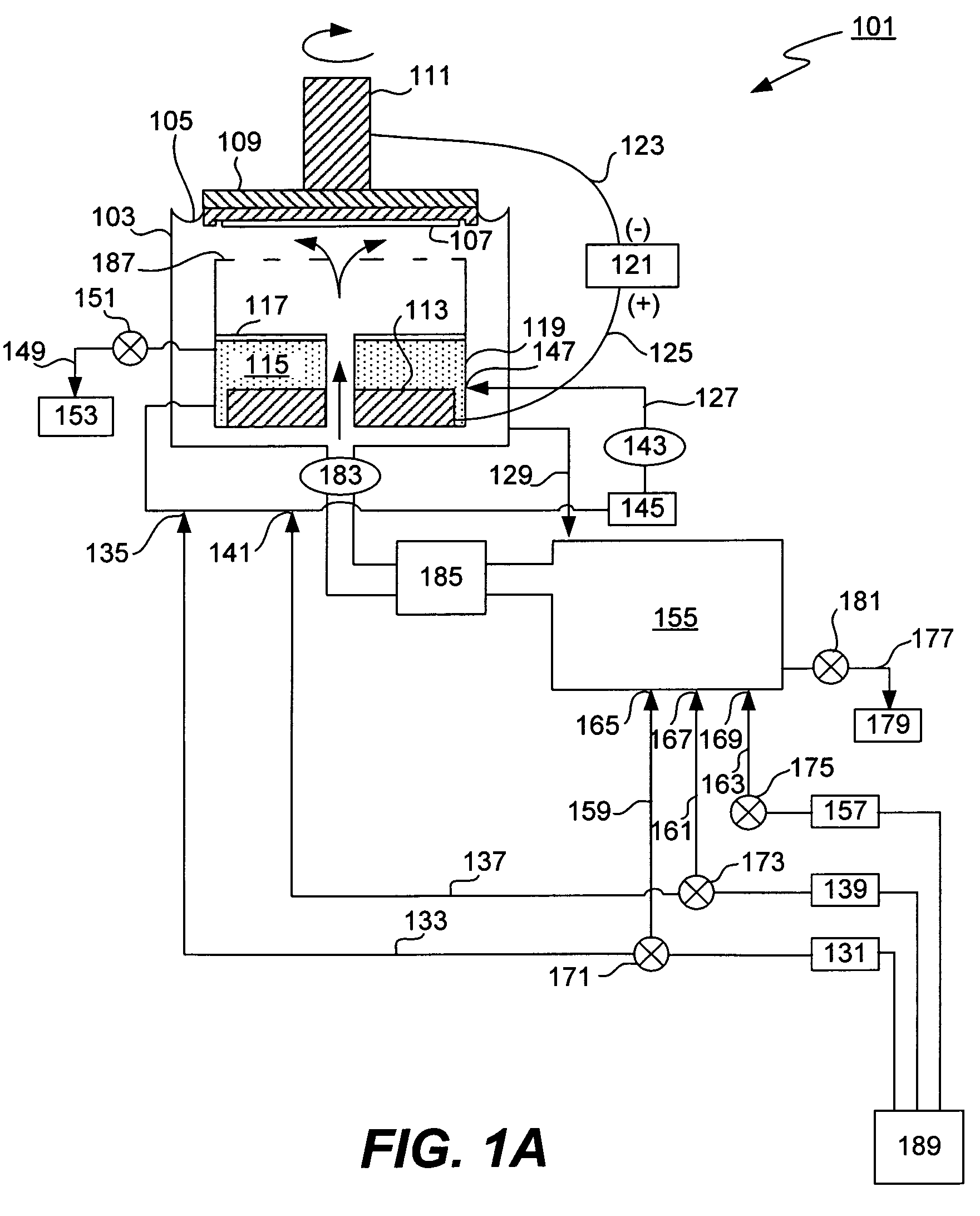Control of electrolyte composition in a copper electroplating apparatus
a technology of electroplating apparatus and copper salt, which is applied in the direction of electrolysis components, electrolysis coatings, coatings, etc., can solve the problems of copper salt precipitation in the anode chamber, anode passivation, and several undesired effects in the plating system, and achieve the effect of preventing salting ou
- Summary
- Abstract
- Description
- Claims
- Application Information
AI Technical Summary
Benefits of technology
Problems solved by technology
Method used
Image
Examples
Embodiment Construction
[0028]The present invention provides a method and an apparatus for controlling anolyte composition. In particular, it allows control of concentrations of anolyte components by providing a diluent to the anolyte. The anolyte is contained within the anode chamber in an electroplating apparatus and is separated from the catholyte by a membrane. The anolyte is recirculated in an anolyte recirculation loop so that the anolyte is returned to the anode chamber upon a treatment, e.g. filtration, dilution or addition of make up solution. Dilution of the anolyte can be accomplished as needed by the user. For example, a diluent may be added to the anolyte in order to decrease concentration of a metal salt, so that it does not precipitate in the anode chamber. In another example, the anolyte may be diluted to compensate for electroosmotically lost water. In one of the embodiments, the anolyte composition is additionally controlled by a bleed and feed method, in which make up solution that conta...
PUM
| Property | Measurement | Unit |
|---|---|---|
| concentration | aaaaa | aaaaa |
| concentration | aaaaa | aaaaa |
| concentration | aaaaa | aaaaa |
Abstract
Description
Claims
Application Information
 Login to View More
Login to View More - R&D
- Intellectual Property
- Life Sciences
- Materials
- Tech Scout
- Unparalleled Data Quality
- Higher Quality Content
- 60% Fewer Hallucinations
Browse by: Latest US Patents, China's latest patents, Technical Efficacy Thesaurus, Application Domain, Technology Topic, Popular Technical Reports.
© 2025 PatSnap. All rights reserved.Legal|Privacy policy|Modern Slavery Act Transparency Statement|Sitemap|About US| Contact US: help@patsnap.com



